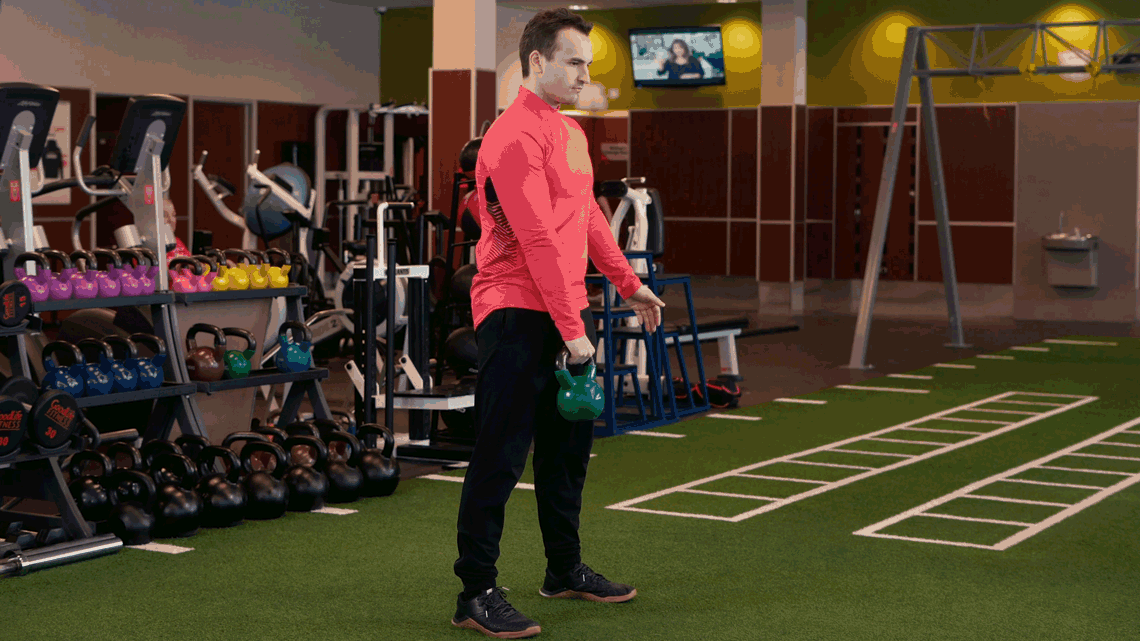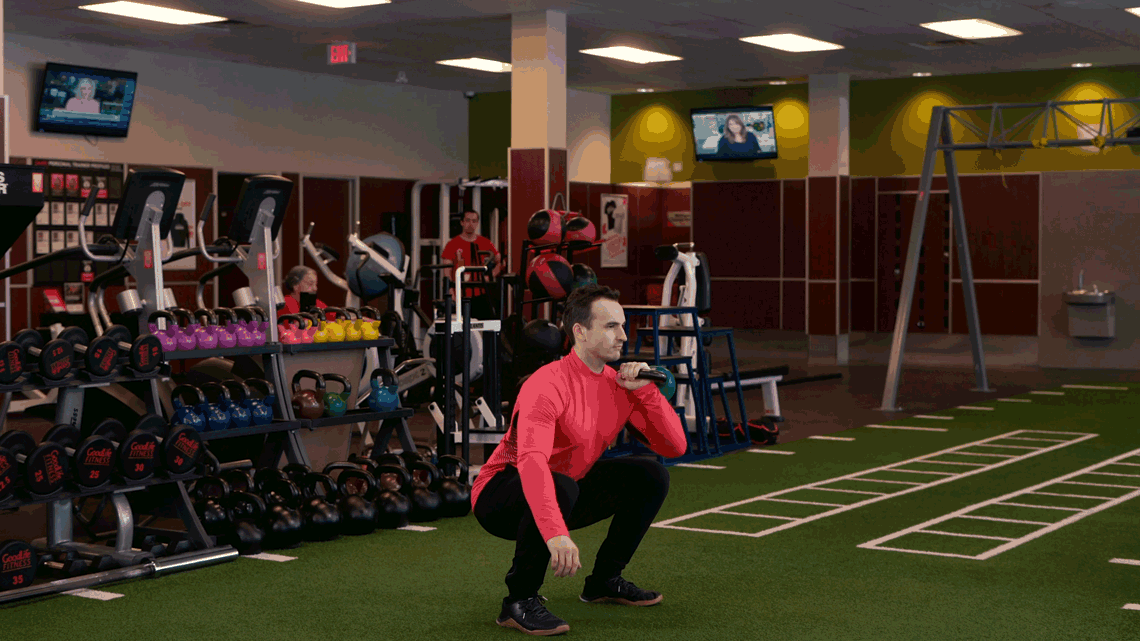Kettlebell flows are a great way to get your heart rate up, build muscle and improve mobility. Kettlebell flows are composed of small and controlled transitional movements that help improve your sense of space and cognition.
Before you begin this flow, choose an appropriately weighted kettlebell. For your first flow, choose a lighter kettlebell. Once you can perform the flow in a controlled manner, try upping the weight.
If you would like to dial down the intensity of the workout, grab your kettlebell with both hands instead of one. The unilateral variation (one hand on the kettlebell) is much harder to coordinate than the bilateral variation, which requires both hands.
Step 1 — Single-arm deadlift
- Place the kettlebell on the floor between your feet
- Draw your shoulder blades down and in, bend your hips back and reach down to grasp the kettlebell with your right hand
- Your shoulders should be parallel to the floor and directly over the weight
- Push through your heels to extend your hips and stand tall
- Bend at your hips and return the kettlebell to the floor

Step 2 — Clean
- From that position, rotate your hand inward so your palm faces your shin
- Perform the same deadlift motion — explosively and simultaneously pull your elbow back, close to your body
- The momentum will help you muscle the weight up to shoulder height
- Catch the weight at your shoulder with the handle just under your chin and your forearm vertical

Step 3 — Squat to press
- From the clean position, turn your toes out slightly and bend at your knees, lowering your torso until your thighs are parallel to the ground
- Keep your chest up and open as you drop down
- Drive through the legs to return to standing and press the kettlebell overhead explosively, keeping your core engaged
- Return the kettlebell to the floor, then repeat the entire flow with your left hand

